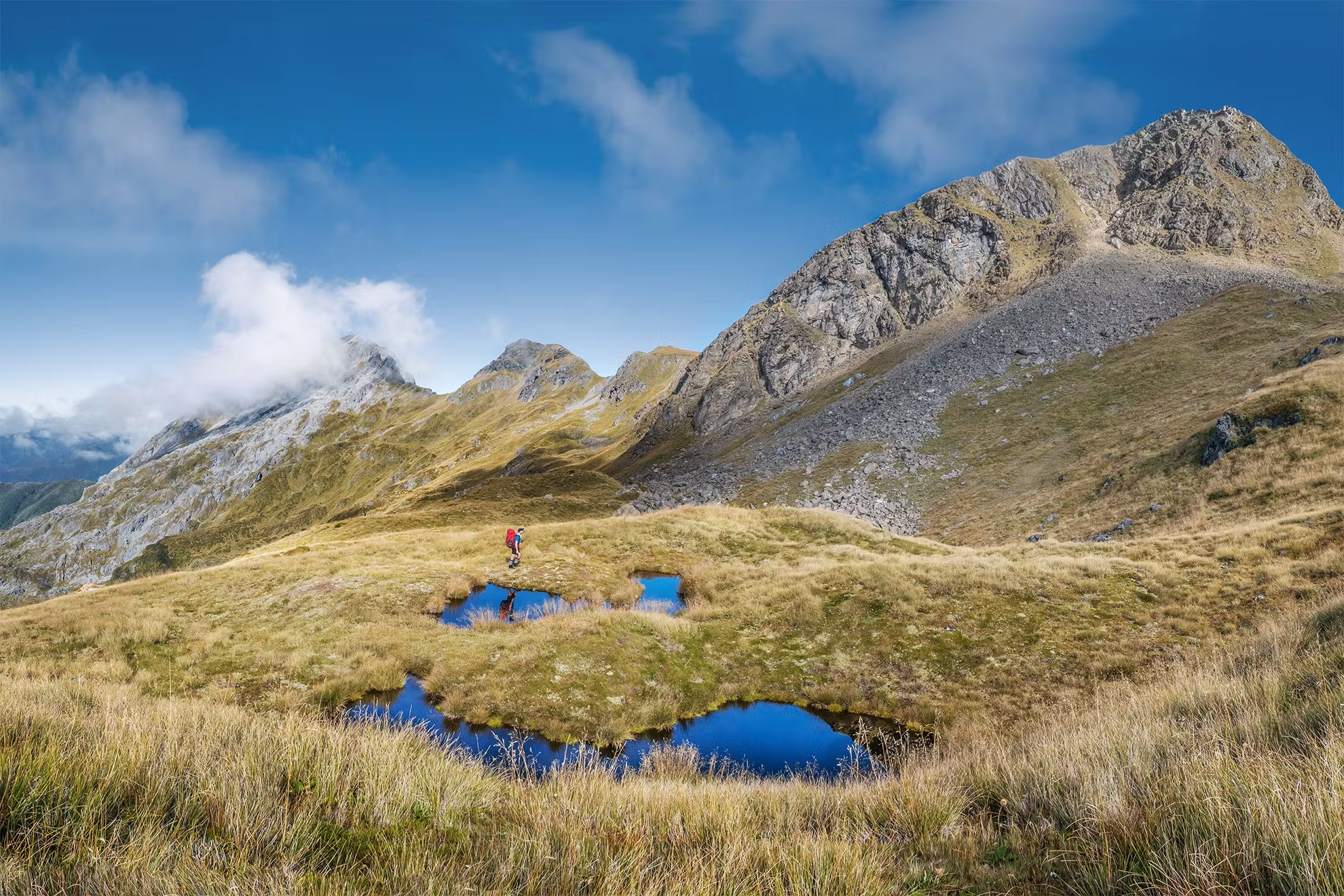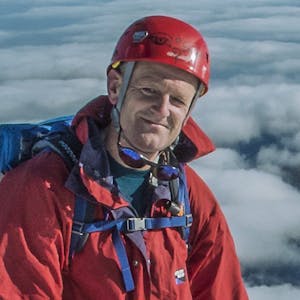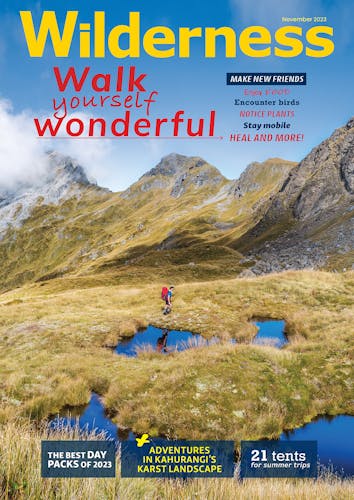Exploring Kahurangi National Park’s karst landscape to the south of Mt Arthur offers a wild yet easily accessible adventure.
The chain led my gaze down a steep, craggy gut to the abyss. Bolted into the limestone of South Twin, it begged the question: ‘Are you up to following it?’
As Wilderness roving editor Shaun Barnett and I munched on lunch, I answered out loud, “I think I’d rather climb it than descend it.”
Shaun nodded thoughtfully. “Mind you, the descent from North Twin might be worse.”
This was all theoretical, given that I was having an operation on my knee the following week and I found the descent of steep and rough terrain arduous. But it was fascinating and satisfying in equal measure to see the airy terrain culminating in a notch between North Twin (1809m) and South Twin (1796m), where we now sat.
You don’t need to climb The Twins in order to appreciate the magnificent karst landscape that we were exploring, on a superb circuit that offered a route beginning and ending on the most civilised of footpaths, transitioning into an off-trail journey demanding route-finding care, and taking us through beech forest, rolling tussock lands, other-worldly bulbous karst formations, tarn bejewelled tops and sheer cliffs.
Mt Arthur is a popular climb for trampers of all abilities and ages. A bit over an hour from the trailhead, on a nicely maintained footpath, is eight-bunk Mt Arthur Hut, nestled right at the edge of the treeline at 1300m. There are few easier ways to reach the alpine tops, and that’s one of the reasons for the route’s popularity.
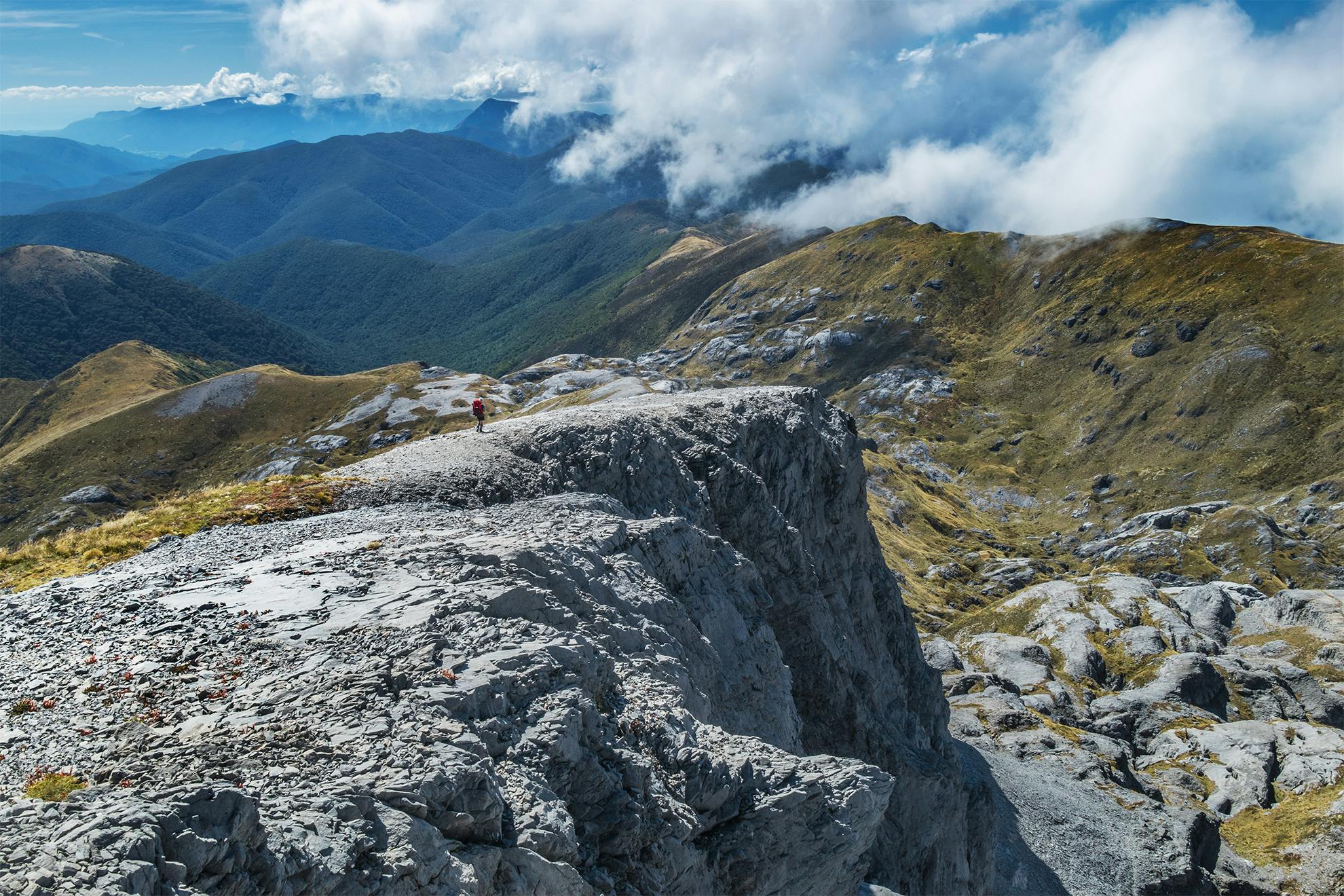
Another reason is the distinctive and spectacular scenery defined by karst rock formations. A karst landscape evolves where bedrock is dissolved over aeons to form sinkholes, sinking streams, caves and springs. Mt Arthur, by contrast, is hard crystalline marble, transformed from softer limestone laid down under the sea about 450 million years ago. During the ice ages, glaciers carved smooth basins on the flanks of the mountain, scouring and polishing the marble. The basin floors are pock-marked with sinkholes where surface water has drilled into extensive cave systems. Peering into these sinkholes, there is sometimes nothing to see but blackness. Smaller holes may be hidden by tussock, so don’t assume your next step will be on solid ground when travelling across this terrain.
Below ground, to the south of Mt Arthur, are some of the deepest shafts and most intricate cave systems in New Zealand. The Nettlebed Cave, first explored in 1969 and until recently believed to be the deepest in New Zealand, is one of the most famous. Beneath the Ellis Basin, where Shaun and I planned to explore (above ground), lies the Ellis Basin cave system, the deepest system in the Southern Hemisphere. More than 1000m deep, it was confirmed only in 2010. Intrepid cavers are still very active in this caving mecca. Who knows what is still hidden beneath the surface?
Our journey began in clag and rain but with fine weather forecast for the following days.
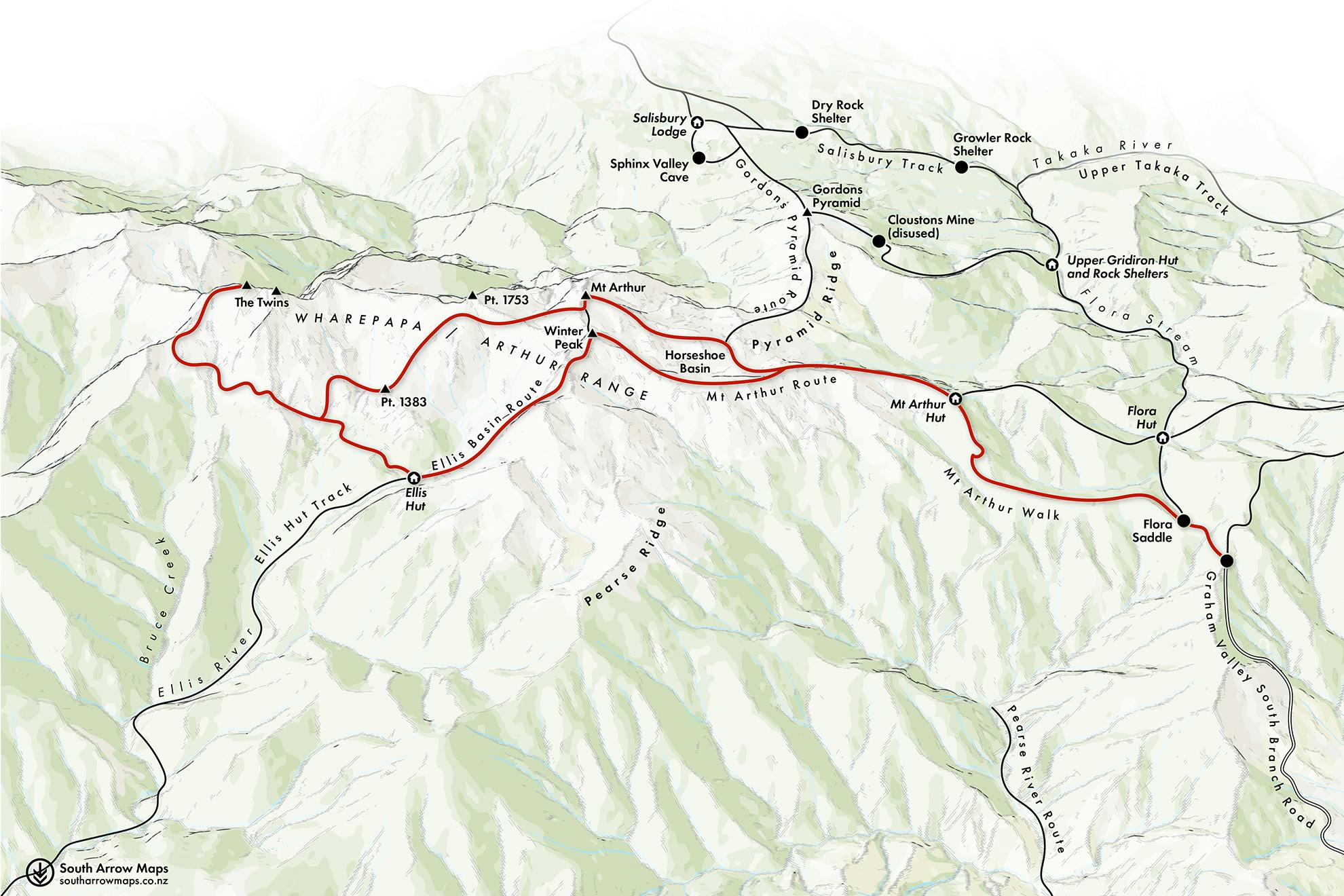
As we climbed past Mt Arthur Hut, the rain ceased and breaks in the swirling cloud revealed widening glimpses of the karst terrain.
The trail to Mt Arthur is well trodden and clearly defined. At 1680m, not far below the mountain’s summit and directly beneath Winter Peak, the trail branches left and up, leading over a spur that gives access to Ellis Basin. As soon as we crested the ridgeline, the feel became wilder and the landscape much more impressive.
To our right, the Wharepapa / Arthur Range extended south-west towards the fortress-like Twins, punctuated by three dramatic highpoints. Beneath this the slopes fell away steeply, broken with bluffs, to the basin’s flat tussock-covered floor 600m below, all dotted with fantastic karst formations. At the southern end of the basin a glint of reflected sunlight revealed Ellis Hut, our destination for the night.
The traversing descent was steep and relentless. Shaun quickly disappeared ahead of me as the terrain rolled over, and I eventually joined him at the six-bunk hut as darkness fell. We enjoyed a comfortable night thanks to the great restoration efforts of volunteer Ross Cullen and his local team, supported by the Backcountry Trust.
Ross had taken a photo of a poster in Ellis Hut that provided route information for climbing the Twins. Fortunately, he shared this with me before Shaun and I set out, because when we arrived the poster had been removed. Just who prepared the poster is a mystery, but the information and its presentation were very good.
We were pleased to discover the next morning that the efforts of the mystery person went beyond the poster, however. Thoughtfully placed blue triangles marked the route through beech forest onto the karst labyrinth above the hut. From there, the markers became short blue poles embedded in the marble, which led to a junction on the karst at about 1200m. Here a second set of orange-coloured route markers branched to the right (north) towards the more challenging North Twin.
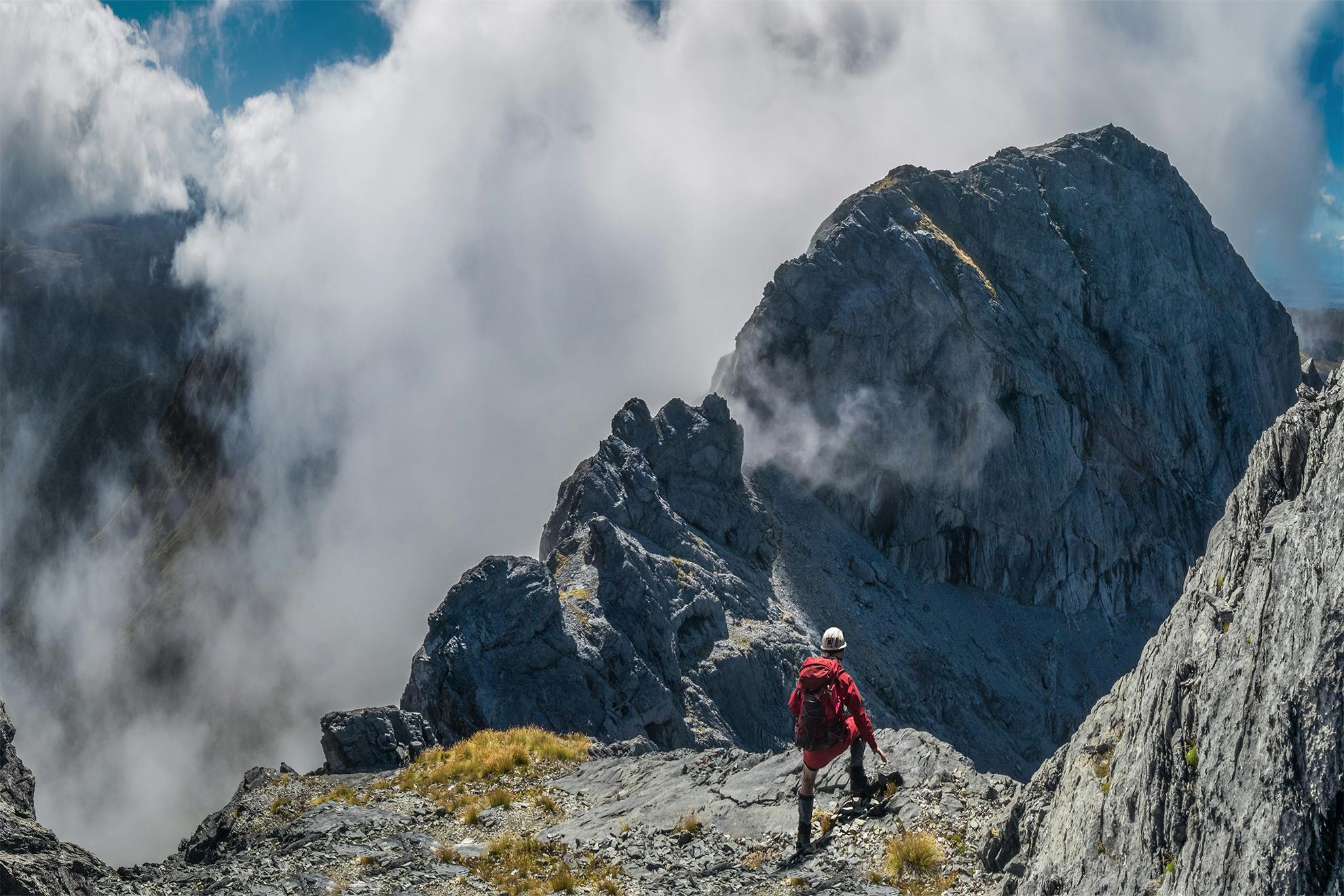
After stashing unneeded items from our packs in a karst hollow, we stayed with the blue poles, continuing south around the huge south-eastern buttress of North Twin towards the much easier tramping route up the south-west ridge of South Twin.
Crossing the complicated karst terrain, we were glad of the reassurance and time-saving provided by those markers. Our attention was constantly distracted as we marvelled at dramatic, gaping sinkholes and craned our necks at the towering ramparts above.
After nearly three hours we were back on the Arthur Range at 1400m, on the east side of South Twin. An easy slog up tussock slopes and onto scree, levelled out on the 1796m summit. Cloud swirled, briefly revealing glimpses of North Twin only 200m as the kea flies to the north-east and 14m higher. Separating the Twins is a menacing 60m-deep notch, graded alpine III and requiring a rope to traverse. Not for us today.
It took a similar time to retrace our steps to collect our stashed gear. We debated camping there on a small patch of soft tussock surrounded by unforgivingly hard marble, but a good three hours of daylight remained.
Shaun thought he could see a route up towards the head of the basin just to the west of Pt1383 and said there was meant to be a small tarn there. It sounded promising, so off we went. Picking our way through the karst dips and bulges required trial and error, reinforcing the value of those blue and orange markers, but we did eventually leave the rock behind to climb up the gradually sloping tussock. Then the first of a number of tarns appeared. At 1400m we came across a real beauty. Nestled in a small, flat depression, it offered shelter from breezes and reflected the Twins on its mirror surface. There was even a nearby high point offering panoramic views in every direction.
Both sunset and sunrise were majestic and put big smiles on our dials.
We believed that on rejoining the main ridge of the Arthur Range, just south of Pt1753, the next morning our route to Mt Arthur should be straightforward. But we were in for a rude surprise.
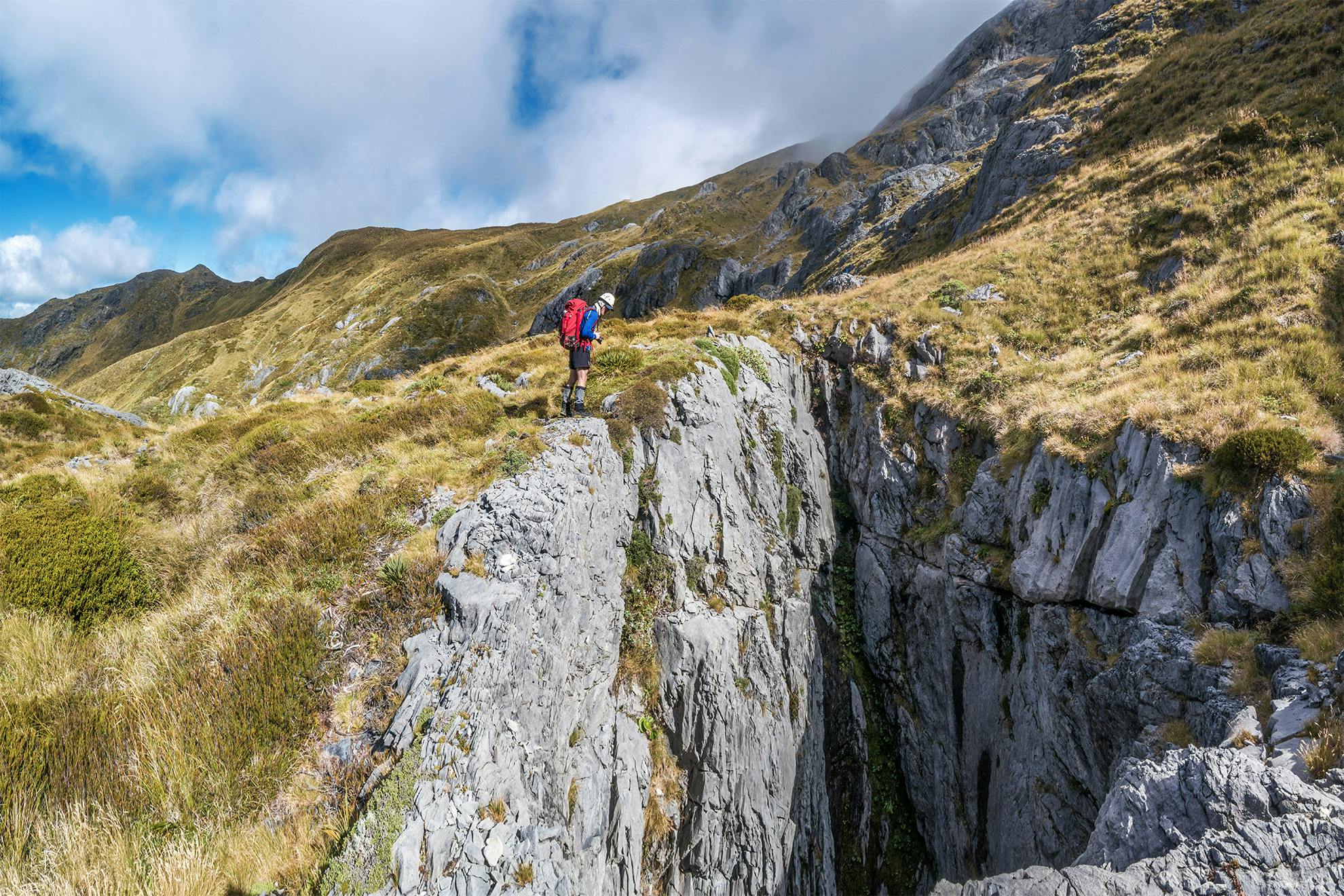
“That’s not what the topo map suggested,” I groaned, as we reached the north side of Pt1753. The slope plunged several hundred metres and steep cliffs on the south side looked far from a certain route to where we needed to go. It was a classic example of how much can be hidden between two 20m contour lines. Swirling view-obscuring cloud materialised. We paused and considered our options, which included the unappealing descent back to the basin floor and retracing our steps of the previous days.
I examined the map again. Two contours suggested a possible exit point. We set off, sidling around the steep rocky ground at the base of the cliffs.
Shaun soon spied a cairn, then another. As we progressed, the smear of a route became apparent, leading to those two nicely spaced contours at the tip of a spur leading down from Pt1753. A little uncertainty had added some spice to our morning, but now, back on the Arthur Range proper, we could see a clear way to the summit of Mt Arthur.
A little later, while enjoying lunch in the sun on top of the mountain, we watched a long line of spirited young trampers whooping and hollering their way up the main trail. We had done a superb circuit – wild yet so accessible.
As the crowds started to gather, we finished our lunch and continued down the hill towards Horseshoe Basin and the road end.
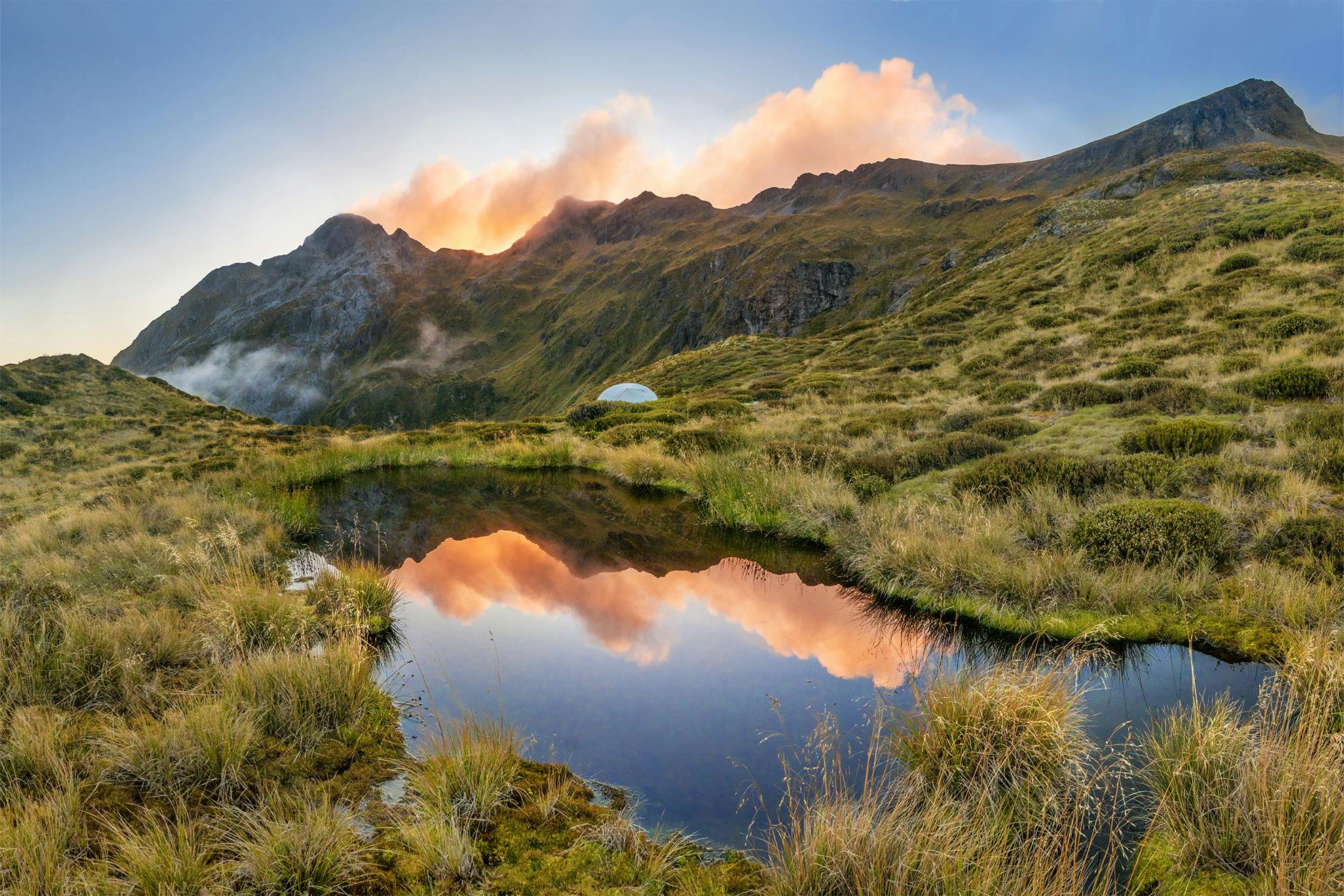
- Distance
- 30.2km
- Total Ascent
- 2468m
- Grade
- Moderate / Difficult
- Time
- Flora car park to Ellis Hut, 5–6hr; to South Twin summit, 4hr; to 1400m tarn campsite, 2hr; to car park via Mt Arthur, 5–6hr
- Accom.
- Mt Arthur Hut (serviced, 8 bunks), Ellis Hut (standard, 6 bunks)
- Access
- Flora car park via Graham Valley South Branch Road
- Map
- BQ24
GPX File
- The Twins (gpx, 131 KB)
GPX File
- Your device does not support GPX files. Please try a different device.





